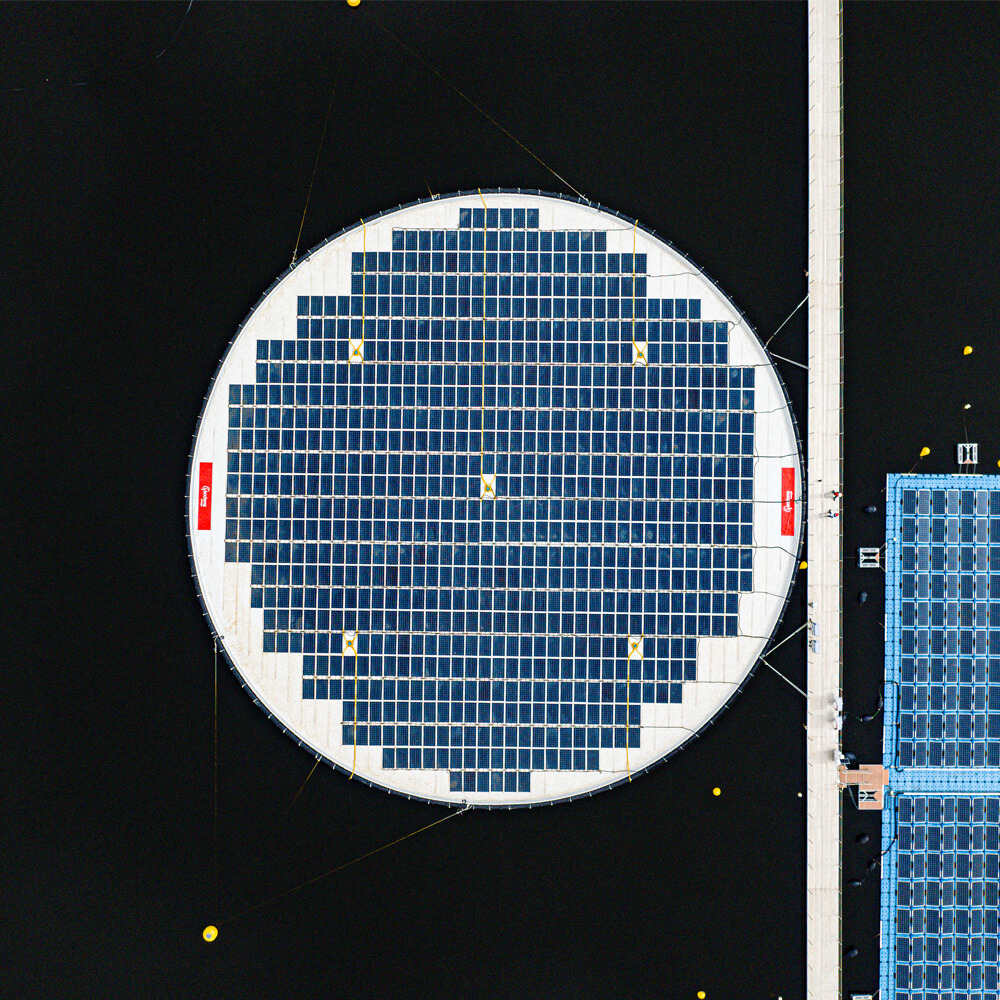Kirigami-inspired solar panels
The ancient art is inspiring the design of solar cells so they can change shape to catch the sun
An innovative membrane technology, tested in the Sierra Brava reservoir, paves the way for floating photovoltaics in marine environments.
In recent years, there has been increasing interest in harnessing marine renewable energies such as tidal and wave power. However, the energy transition is also focusing on the sea to introduce traditionally land-based energies, moving towards a more sustainable world. Offshore wind energy is already a reality, and floating offshore wind is gaining momentum. Now, floating photovoltaic energy is expected to follow suit.
Although there are not yet many prototypes of floating structures developed for this purpose, the Sierra Brava floating photovoltaic plant features one of the most advanced models, based on a novel membrane technology. In this article, we will cover the following:
Currently, several projects are leveraging the potential of floating photovoltaic plants on bodies of water such as irrigation reservoirs and dams. Solar panels can be installed on the water by using semi-rigid structures anchored to the bottom, increasing installed capacity without occupying land. This solution is excellent for developing clean energy in areas where land is scarce, the terrain is unsuitable, or other activities make land-based solar plants impractical.
By 2022, global floating PV capacity exceeded 5 GWh, with an estimated annual growth of 30% in the coming years. A recent study by researchers from China, Thailand, Sweden, and the USA indicated that if 30% of the world's reservoir surface area were used, global generation capacity could exceed nine TWh per year. Countries with significant potential include the USA, Brazil, Portugal, and Spain.

Spain already has a notable example of floating photovoltaics in the Sierra Brava reservoir in Extremadura, located in the province of Cáceres. Developed and installed by ACCIONA Energía, this plant was the first to be connected to the electricity grid in Spain. Here, six floating photovoltaic fields are being analyzed, testing different configurations of solar panel types, inclinations, and flotation systems, as well as their integration with the surrounding ecosystem.
The latest technology installed at Sierra Brava features a circular structure reminiscent of water lilies. It includes a thin hydro-elastic membrane less than two millimeters thick, which supports up to seven hundred and seventy panels. These double-glazed panels rest directly on the membrane, maximizing water cooling and allowing maintenance personnel to walk on them.
This membrane has its own mooring and anchoring system, providing greater flexibility and resistance to strong waves and wind gusts. This feature simplifies the mooring system in dams and reservoirs and enables the expansion of floating photovoltaic solar energy to the sea. The open ocean's conditions are more unpredictable and challenging than those of a reservoir, but the marine environment offers vast potential for solar energy to help mitigate climate change. Additionally, this could facilitate the hybridization of offshore wind farms and other marine technologies.
Floating photovoltaics offer numerous benefits, such as utilizing aquatic surfaces, reducing water evaporation, and algae proliferation, and improving panel efficiency. Hydro-elastic membrane technology provides additional advantages, including:
The evolution of floating photovoltaic energy at the Sierra Brava Floating PV HUB, which already has half a dozen platforms with various configurations, indicates a high growth potential for solar energy. To learn more about other technologies harnessing the sea's potential, such as reverse osmosis desalination, subscribe to our newsletter at the bottom of this page.
Sources:
All fields are mandatory.
Read the most discussed articles
{{CommentsCount}} Comments
Currently no one has commented on the news.
Be the first to leave a comment.
{{firstLevelComment.Name}}
{{firstLevelComment.DaysAgo}} days ago
{{firstLevelComment.Text}}
Answer{{secondLevelComment.Name}}
{{secondLevelComment.DaysAgo}} days ago
{{secondLevelComment.Text}}